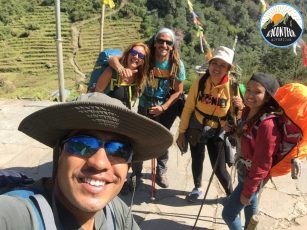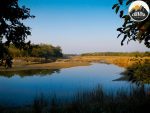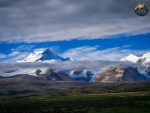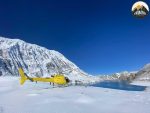Preventing Altitude Sickness While Trekking in Nepal Annapurna Region

Mountain sickness, often known as altitude sickness, or AMS, is a kind of altitude sickness. It’s not something you want to encounter while hiking in Nepal. For years, you’ve been planning your trip to Everest Base Camp, Annapurna, the Dolpo area, or the Manaslu Circuit. You will encounter considerable altitude wherever you travel in the Nepalese Himalayas. Although exhilarating, the mindset may be pretty harmful. Allow us to explain what altitude sickness is and, more importantly, how to avoid it. You’re on your way to Everest Base Camp and enjoying the time of your life. Everything has been going swimmingly, and you can’t wait to reach Kala Pattar with its boundless panoramas if you make it there. Suddenly, you’re sick to your stomach and feel compelled to puke. You’d heard about it but never imagined it would happen to you. Altitude sickness is a common occurrence. It’s true. How to Stay Away from Altitude Sickness While Trekking in Nepal.
What is the definition of altitude sickness?
Symptoms and Diagnosis of Altitude Sickness
Preventing Altitude Issues
Trekking-Related Illness
I’m not feeling well.
So, what’s next?
What is the definition of altitude sickness?

The term “altitude sickness” is self-explanatory. Acute Mountain Sickness (AMS) or simply Mountain Sickness, is a health consequence a person is exposed to low oxygen levels at a high altitude. Altitude sickness isn’t only confined to the Himalayas; it may also strike hikers on Mount Kenya, Kilimanjaro, or the Inca Trail. You may have dyspnea at lower altitudes up to 1,500m (5,000ft), but AMS commonly appears above 2,400m (8,000ft). If left untreated, AMS can lead to more severe illnesses such as high altitude pulmonary edema (HAPE) and high altitude cerebral edema (HACE). Although HAPE and HACE can be fatal, they affect less than 1% of unacclimated hikers exposed to the elements.
Even toughened to allow for appropriate acclimatization nausea and be short of oxygen while hiking. Anyone, regardless of age or physical health, can get altitude sickness.
Symptoms and Diagnosis of Altitude Sickness

AMS symptoms include nausea, shortness of breath, headache, and difficulty exercising, and they appear within a few hours after arriving at a high altitude. An overall sense of exhaustion will sap all of the joy you were experiencing before things being barong You may have trouble falling asleep, dizziness, and a strong headache. You may lose of coordination have, have difficulty walking, and have a tight chest. If you develop HAPE or HACE, you may get disoriented, experience shortness breakoff breasts, and be unable to move. The theatre altitude you go, the worse your problems will be. If you’ve seen the movie Everest, you’ll understand what we’re talking about. However, those people were climbing when we were merely hiking. Altitude sickness can be diagnosed using a variety of grading methods. Guides have been educated in these methods and have dealt with wide mergencieses before. Although many people will have some symptoms of altitude sickness, it does not have to progress t death. You can do a lot to keep healthy at high altitudes if you are aware of know
How to Avoid Altitude Sickness While Hiking
When you’re out in the Himalayas, there are a few rules of thumb to follow.
Your body is working hard to adjust to the new environment, and it will let you know when it is done.
Carefully plan ahead of time.
6 months before to travel, sea medical professional.
Have a complete physical examination and inform your doctor of your plans.
Purchase the medication that your doctor has prescribed
If you intend to hike with children, make sure you prepare them just as well.
Do you have any medical problems that you need to be aware of?
Make sure you talk to the tour doctor about it, too.
Get in Shape
If you want to get make sure you get in shape you are our going to get the most out of your trekking experiencing and, if possible, get some elevation. To recreate a typical day in the Himalayas, exercise 3 to 6 hours each week with a 10kgrucksack. Read on to learn about other ways to get in shape for hiking in Nepal.
Pay Attention to Your Body
When your body needs to relax, it will let you know. Pay Could you pay close attention to it? Awareful the signs and symptoms of altitude sickness and discuss them with others. Tell your friends, guide, and porters how you’re feeling, and halt when your body tells you to. Don’t allow things to grow any worse.
Climb to the top and sleep at the bottom.
Climb high but sleep low is an unspoken rule for hikers and climber.Those why those Everest climbers take so long to reach the summit; they travel up and down several times before attempting the summit. They sleep low, yet they climb high. You will casion encounters descent in the middle of your route. This is being done to ensure that you properly acclimate after tackling elevation.
Food for Thought

Eat consume as much food as possible. Even if you don’t like what’s on your plate, never miss a meal in a tea-house. Your body is working hard, needs a lot, needs many go the additional mile, and tolerates higher elevations. Forget about your diet and treat yourself trekking; astraatenuous ercisstarat may quickly burn over 4quicklyalories per day. Replenish, and your body will thank you.
It’s Critical to Stay Hydrated
Water comes before and after eating. After that, there’s more water. Seriously, you’ll need to increase your water consumption. This is simpler when it’s hot outside, de a, nd your sweating, this is simpler, but you must be disciplined. Drink 3 to 5 liters of water every day, plus another cup of tea. You’re hiking, not partying, so save the booze until after the hike. You’ve been fantasying about hike walking the Annapurna or Everest regions for years, and now you’ve decided to scrimp and save to climb to Base Camp.
Why?
Take it easy on yourself.
Book the 15-day package instead of the 12-day package and enjoy the Namche Bazaar.
There is enough to do, and spending longer time at the same elevation will aid accacclimatisation
Keep track of your urination
Because you will have to produce a leak more frequently because you’re drinking more and at a higher altitude keep this in mind. Simply check to see whether you’re urinating more often than usual. If this isn’t the case, here’s what you should do: Hydrate.
Insurance for Travel
IT won’t save you from getting altitude sickness, but it will come in handy if you need medical help.
CHeck with your insurance carrier to see if you’re insured when travelling and protected at high altitudes.
When you plan to go to high altitude places, most insurance companies will need you to update your coverage.
I’m not feeling well.
So, what’s next?
You’re starting to feel I and are worried you’re getting altitude sickness.
So, what exactly do you do? Communicate. Notify your fellow travel guide or your that you are not feeling well. Guides and porters are trained to recognize the signs and symptoms and can assist you right away. If you or your guide suspects you or your companion, from HACE or HAPE, descend: Only by descending to a lower altitude can you enhance your oxygen intake You lay there till you feel better? Allow yourself to acclimate and return stronger. The material supplied is a compilation of several sources’ tips and tactics. It is not meant to replace the advice vice of medical experts. Don’t forget to read our in-depth post about Nepal trekking if you want to everything know about trekking in the Himalayas!
Preventing Altitude Sickness While Trekking in Nepal Annapurna Region
Mountain sickness, often known as altitude sickness, or AMS, is a kind of altitude sickness. It’s not something you want to encounter while hiking in Nepal. You’ve been planning your trip to Everest Base Camp, Annapurna, the Dolpo area, or the Manaslu Circuit for years. You will encounter considerable altitude wherever you travel in the Nepalese Himalayas. Although exhilarating, the mindset may be pretty harmful. Allow us to explain what altitude sickness is and, more importantly, how to avoid it. You’re on your way to Everest Base Camp and enjoying the time of your life. Everything has been going swimmingly, and you can’t wait to reach Kala Pattar with its boundless panoramas if you make it there. Suddenly, you’re sick to your stomach and feel compelled to puke. You’d heard about it but never imagined it would happen to you. Altitude sickness is a common occurrence. It’s true. How to Stay Away from Altitude Sickness While Trekking in Nepal.






